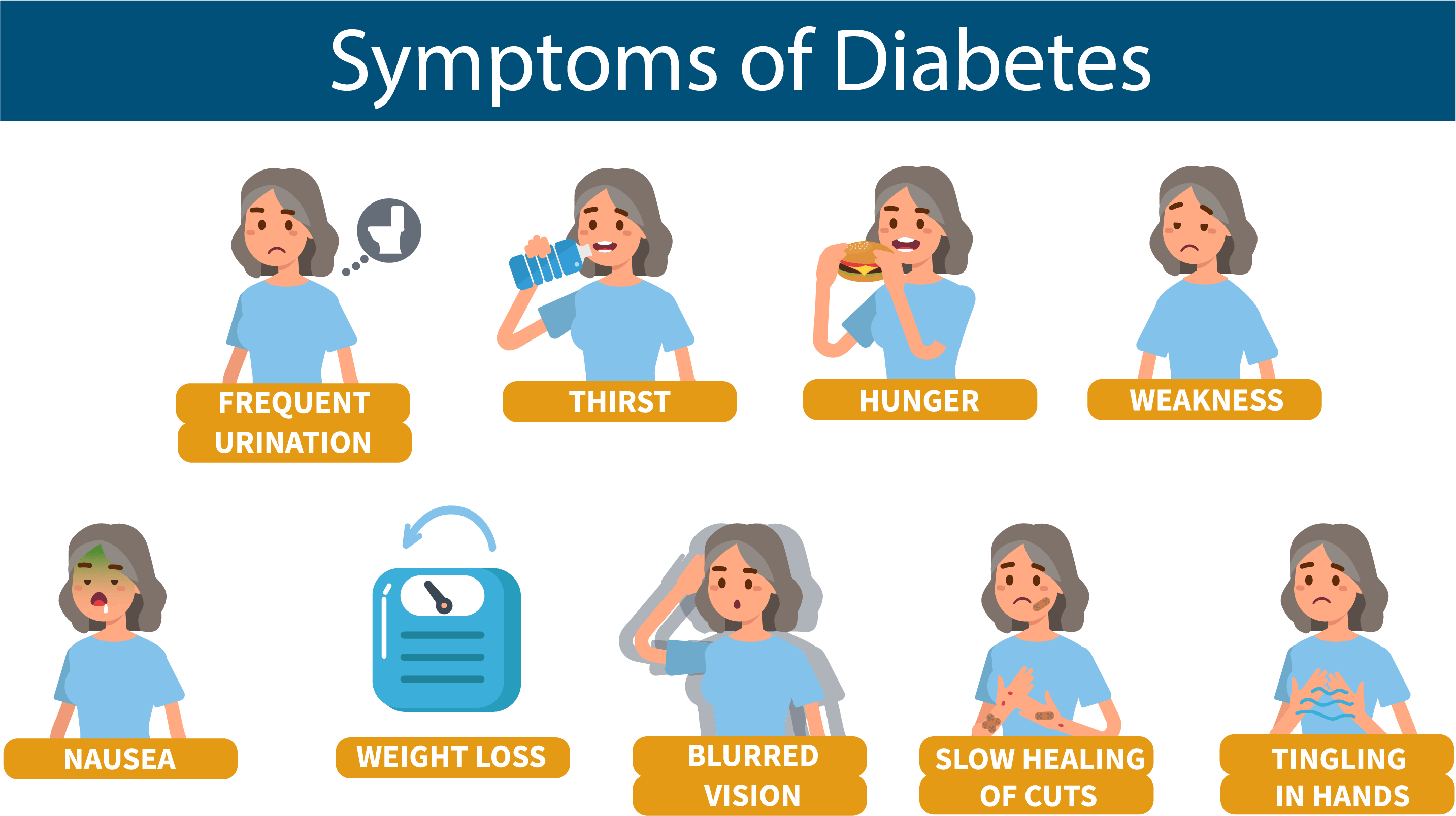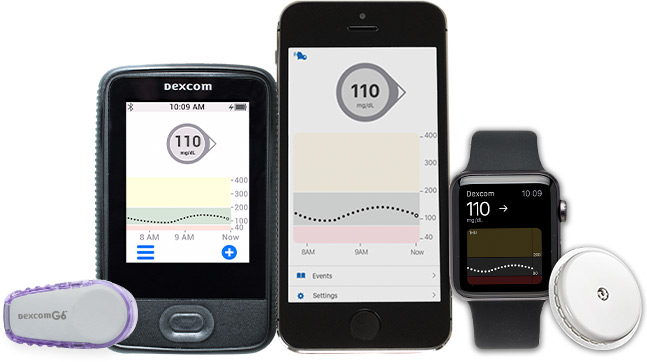Making Life Easier for Seniors with Diabetes
This post was reviewed by our Director of Clinical Excellence and Oversight.

One of the conditions that becomes more common as you age is diabetes, or high blood sugar. The CDC says more than 30 million Americans, or nearly 10 percent of the population, have diabetes. Between 25 and 30 percent of those are 65 and over. Unfortunately, the number of people who are living with diabetes is going in one direction—up. One of the reasons is our aging population; older people are at higher risk for developing the condition.
This blog is meant to provide information about older adults and diabetes, including symptoms to look out for and concrete steps seniors can take to keep their blood sugar under control. Read on to learn more about older adults, diabetes, and what you can do make life easier for yourself or someone you care about who is living with the condition.
Seniors with diabetes are at higher risk for depression or cognitive impairment. These conditions can make it harder to take the self-care steps necessary to keep blood sugar in range.
Diabetes How and Why
People living with diabetes have difficulty processing glucose, or blood sugar, that comes from food. Our bodies need glucose for energy. But over time, elevated blood sugar can cause lots of health issues, including heart disease, stroke, kidney disease, eye problems, and nerve damage. That’s why it’s so important for seniors with diabetes, or a condition known as pre-diabetes, to see a primary health practitioner, and possibly specialists such as endocrinologists.
Pre-diabetes means you may have higher than average blood sugar and hemoglobin A1C levels. The stats on pre-diabetes are sobering. The American Diabetes Association says that half of Americans 65 and up have the condition. Pre-diabetes doesn’t always cause symptoms and not everybody who has it will develop diabetes. The key is to make lifestyle choices that reduce the chance of moving from pre-diabetes to diabetes.
Glucose is processed by insulin, a hormone made by the pancreas. People with type 1 diabetes, usually diagnosed in children and young adults, produce little or no insulin. With type 2, which affects more middle-age and older people, the body doesn’t make or use insulin as it should. Years of poor eating and lifestyle habits, including being overweight and inactive, as well as a family history of the disease, can lead to type 2 diabetes in older adults. Although type 2 diabetes is much more common, it’s also easier to prevent and treat.

The National Institutes of Health says having type 2 diabetes may increase the risk of developing cancer and Alzheimer’s Disease. Older people with diabetes are also at higher risk for depression or cognitive (thinking) impairment. These conditions can make it harder to take the self-care steps necessary to keep blood sugar in range.
What Are the Signs of Diabetes?
Look for excessive thirst, lots of peeing, increased appetite, itchy skin, tiredness, blurred vision, and numbness in the legs and feet. If you experience any of these, contact your healthcare provider. If routine blood tests reveal that glucose levels are off, the doctor will suggest other tests like the A1C (blood sugar over time), fasting plasma glucose, and random plasma glucose.

Once you’re diagnosed, your doctor may bring in other experts, such as a diabetes educator, to assist you. These practical specialists get into the nitty gritty of care, like explaining when and how to eat to control your blood sugar and teaching you how to give yourself, or someone else, a shot of insulin. One particular issue for seniors is the need to keep glucose levels from dropping too low, which can cause fainting, a coma, and other complications.
What Can You Do?
While there is no cure for diabetes, following doctor’s orders and sticking with healthy habits can keep blood sugar in range and prevent unwanted complications. Type 1 diabetes is a condition that requires insulin injections and frequent monitoring of blood sugars. Those with type 1 diabetes need to frequently monitor their blood sugar to ensure they stay within the range their health care professionals determined for them.
You may have heard about Continuous Glucose Monitors (CGMs), a way to check blood sugar 24/7. A small sensor attached to your belly or arm can be swiped or read by a transmitter—no needlestick needed! For many people with type 1 diabetes and those with type 2 diabetes who administer insulin several times a day, these devices can be life changing. If your doctor says you’re a candidate for CGM, Home Care Delivered has the latest models and supplies.
For seniors with type 2 diabetes, the first treatment option is often adjusting exercise and eating habits. Your healthcare team will help create a diabetes management plan tailored to your habits and lifestyle. It’s like a roadmap that covers medication, food, and exercise, all aimed at keeping your glucose at a doctor-recommended level. Keep in mind that your recommended range may be quite different from that of a spouse or friend so you cannot follow someone else’s plan.

A diabetic diet is really not much different from a generally healthy diet. The focus is on portion control and set mealtimes, with more fruits and vegetables, lean protein, and low-fat dairy, and fewer starchy, sugary foods and drinks. While many older people with type 2 diabetes take insulin or other medicines, sometimes lifestyle changes are so successful in reducing blood sugar that people can reduce or eliminate their medication.
Sometimes lifestyle changes are so successful in reducing blood sugar that older people with type 2 diabetes can reduce or eliminate their medication.
Smart Tips for Seniors with Diabetes
We like this list of practical steps older people can take to stay healthy with diabetes. You may already be doing some of them. If so, pat yourself on the back and commit to doing even more!
- Monitor your blood pressure regularly.
- Pay attention to cholesterol, heart health, eye health, and kidney function by getting tested annually for each.
- Stop smoking!
- Get the annual flu shot and a pneumonia vaccine.
- Brush and floss daily and get regular dental checkups.
- Examine your feet regularly for sores or blisters.
- Get regular cancer screenings; which ones you need depend on your age and gender.
- Talk with your doctor about any concerns, including memory problems, changes in your health, or anything that just doesn’t feel right.
HCD is Your Diabetes Partner
Managing diabetes at any age can be a challenge, especially in later years when the risk of complications is higher. Home Care Delivered makes it super easy to order your diabetes supplies and have them delivered right to your front door. We carry Continuous Glucose Monitors (CGM) by Dexcom and FreeStyle Libre, insulin pumps, traditional monitors, syringes, test strips, and more.
Our diabetes specialists will answer your questions and a member of our team will check in to make sure you’ve got everything you need. We’ll even do the paperwork for you and communicate with your doctor…talk about peace of mind!
Call today to enroll at 804-885-4101. Or, simply enter your phone number on the bottom left of the screen and a friendly team member will give you a call. Don’t forget to ask your doctor if you qualify for a Continuous Glucose Monitor from HCD!

Get Insurance-Covered CGM & Diabetes Supplies
Monthly Deliveries | We Handle the Paperwork

Disclaimer:
Unless otherwise noted, the recommendations in this document were obtained from the sources indicated. Be advised that information contained herein is intended to serve as a useful reference for informational purposes only. HCD cannot be held responsible for the continued accuracy of or for any errors or omissions in the information. All trademarks and registered trademarks are the property of their respective owners.
